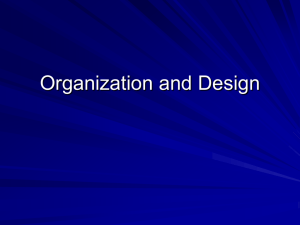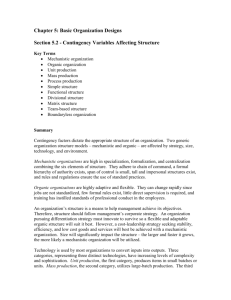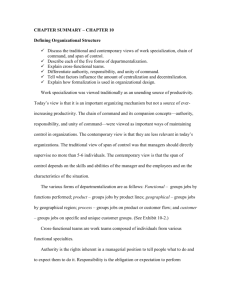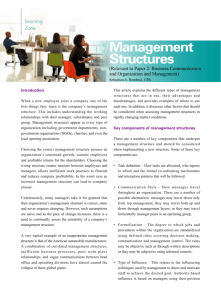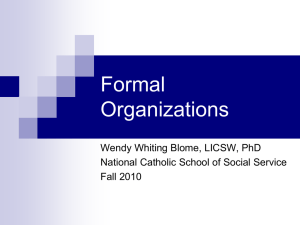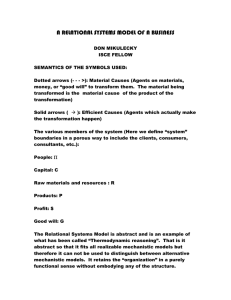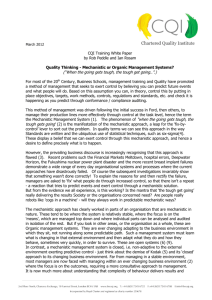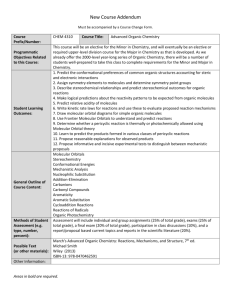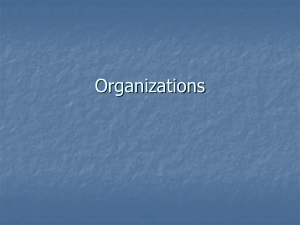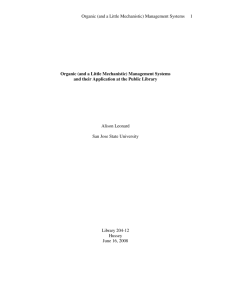Organizational Design Video 9A Mechanistic vs. Organic
advertisement
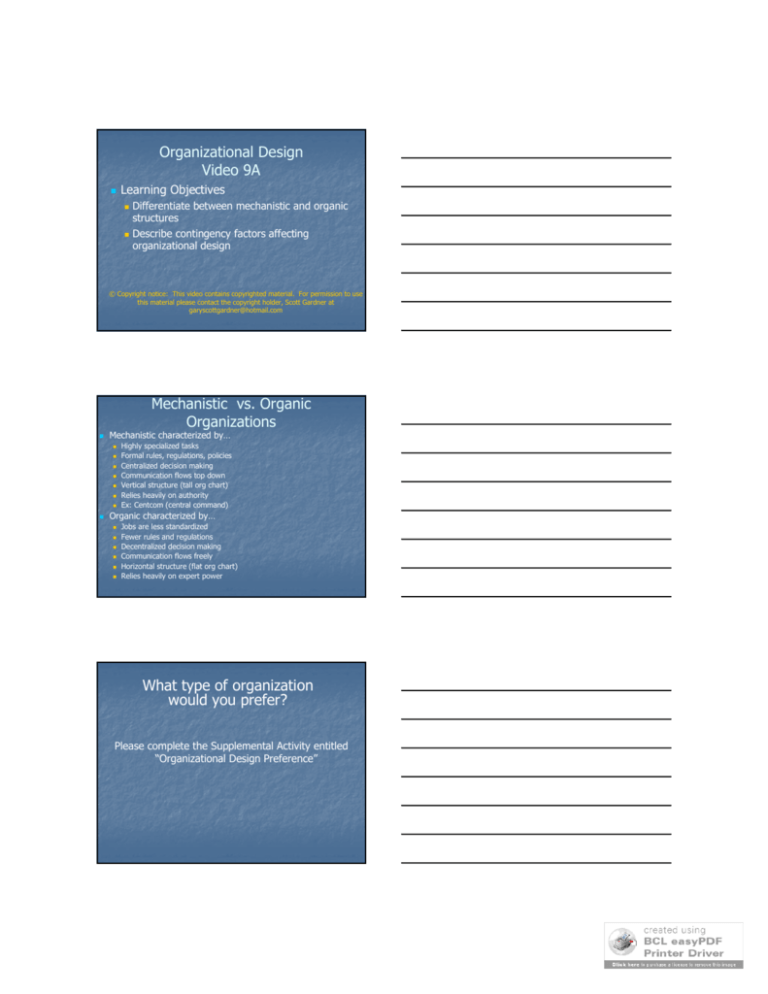
Organizational Design Video 9A Learning Objectives Differentiate between mechanistic and organic structures Describe contingency factors affecting organizational design © Copyright notice: This video contains copyrighted material. For permission to use this material please contact the copyright holder, Scott Gardner at garyscottgardner@hotmail.com Mechanistic vs. Organic Organizations Mechanistic characterized by… Highly specialized tasks Formal rules, regulations, policies Centralized decision making Communication flows top down Vertical structure (tall org chart) Relies heavily on authority Ex: Centcom (central command) Organic characterized by… Jobs are less standardized Fewer rules and regulations Decentralized decision making Communication flows freely Horizontal structure (flat org chart) Relies heavily on expert power What type of organization would you prefer? Please complete the Supplemental Activity entitled “Organizational Design Preference” 1 Contingency Factors Question—To what degree should an organization be organic or mechanistic? Contingency Variables Strategy Strategies which have element of risk, demand flexibility etc require organic structures Ex: Diversification, Integration strategies Strategies which maintain the status quo or require tight control fit nicely in mechanistic organizations Ex: Stability, cost leadership strategy Environment Uncertain environments call for organic structures Stabile environments call for mechanistic structures More tolerable to change—better equipped to handle change Rules work nicely here due to higher degree of predictability Contingency Factors Continued… Contingency Variables Size of the Organization Small companies tend to be more organic. Have… Little division of labor Few established rules, policies Large companies tend to be more mechanistic. Higher degree of specialization Well established rule, policies, reporting relationships Ex: Some large universities have become mechanistic Contingency Factors Continued… Contingency Variables Age of Organization (Life Cycle) Birth (Very Organic) Youth (Somewhat Organic) Hires more employees, tasks are more defined and broken down Midlife (Organic/Mechanistic) Maturity Stage (Very Mechanistic) Very little staff, procedures, tasks are not specialized Extensive rules, procedures, systems defined Extremely bureaucratic Many companies must downsize to survive Technology Unit production technology=designing to customer specs=need to be flexible=organic Mass production technology=designing standardized product=more reliance on rules of conformity=mechanistic 2
